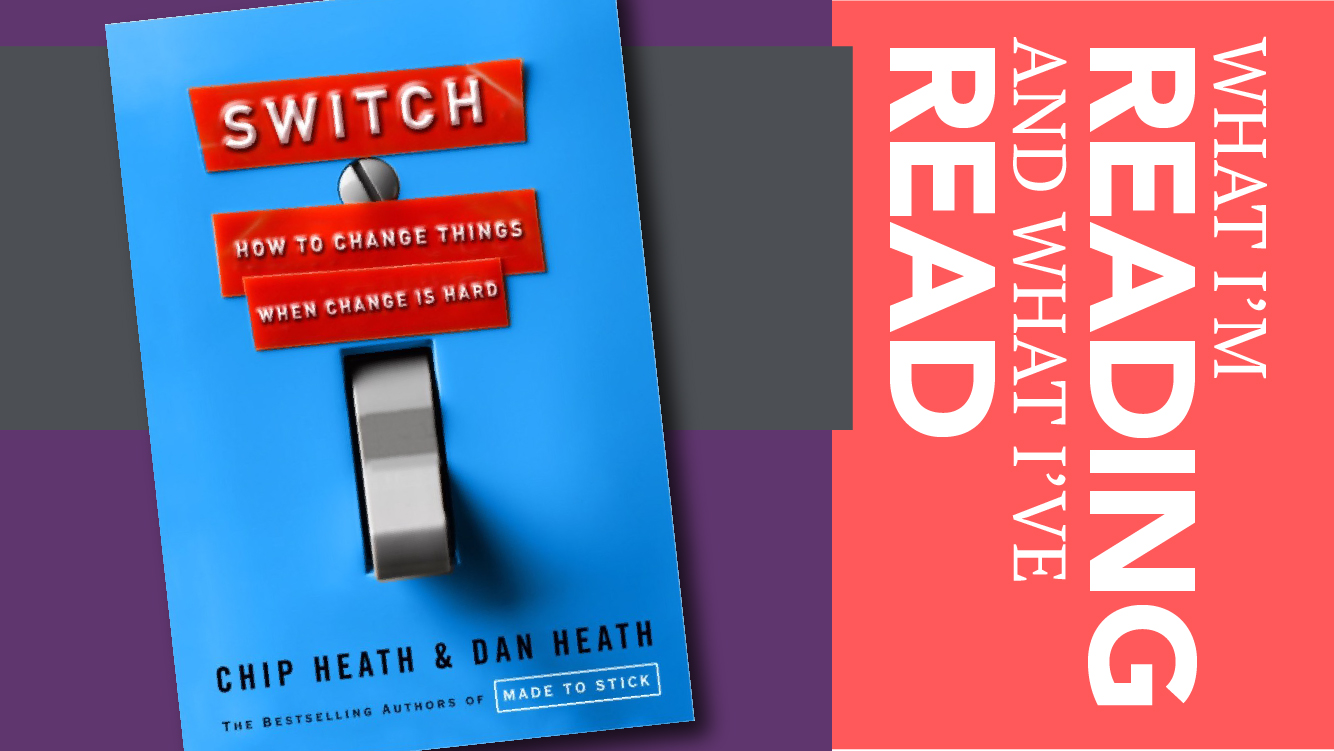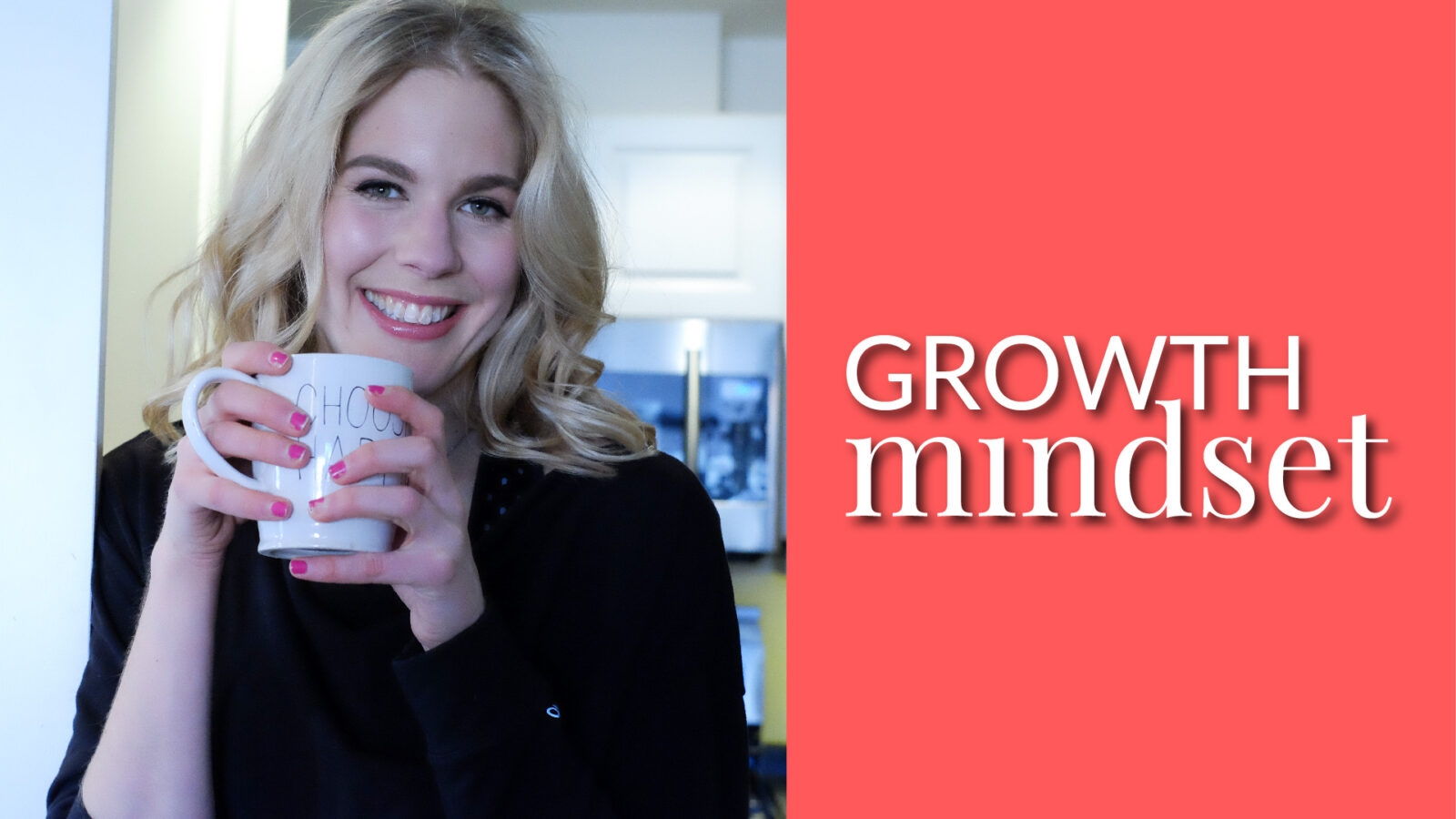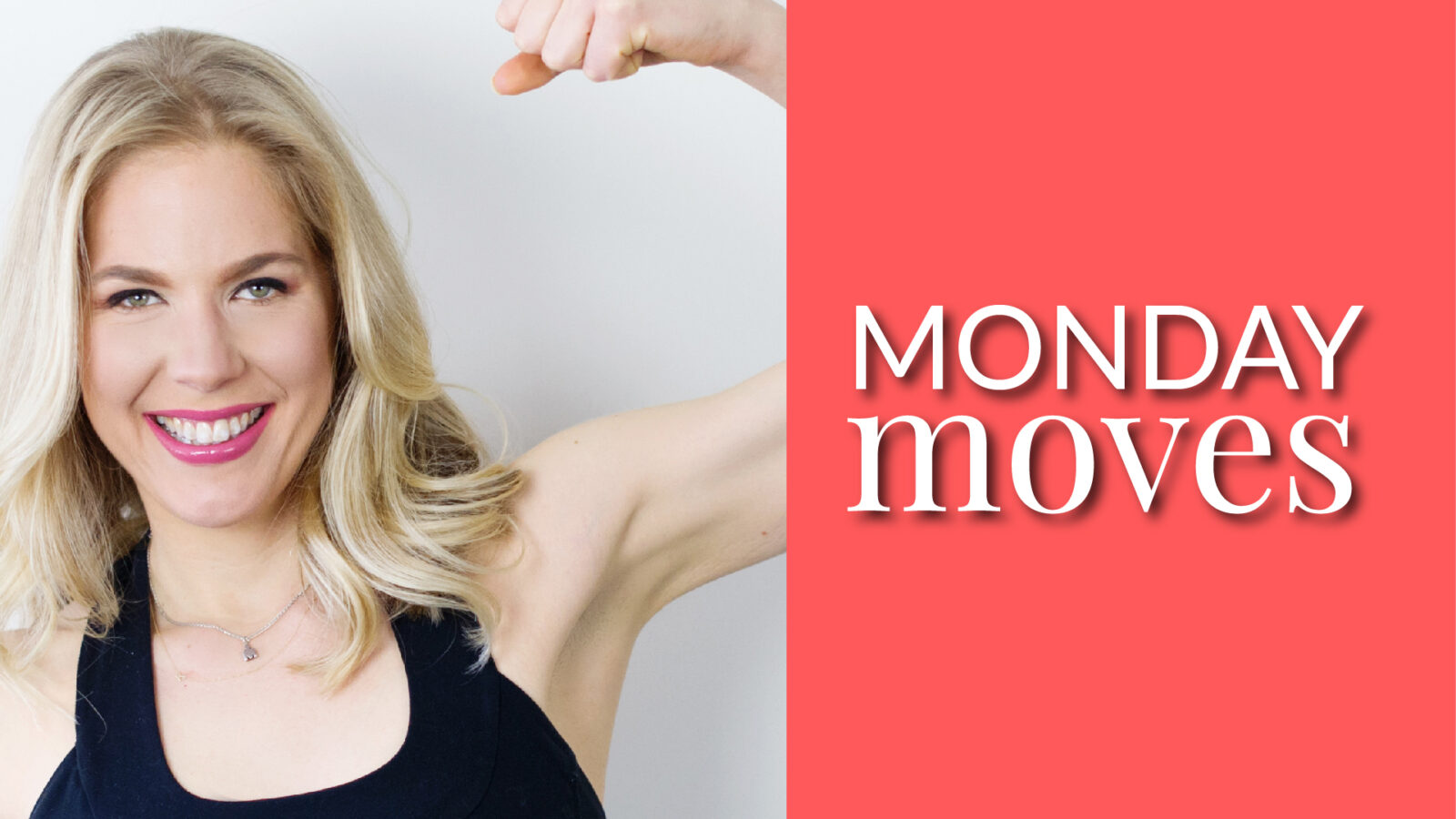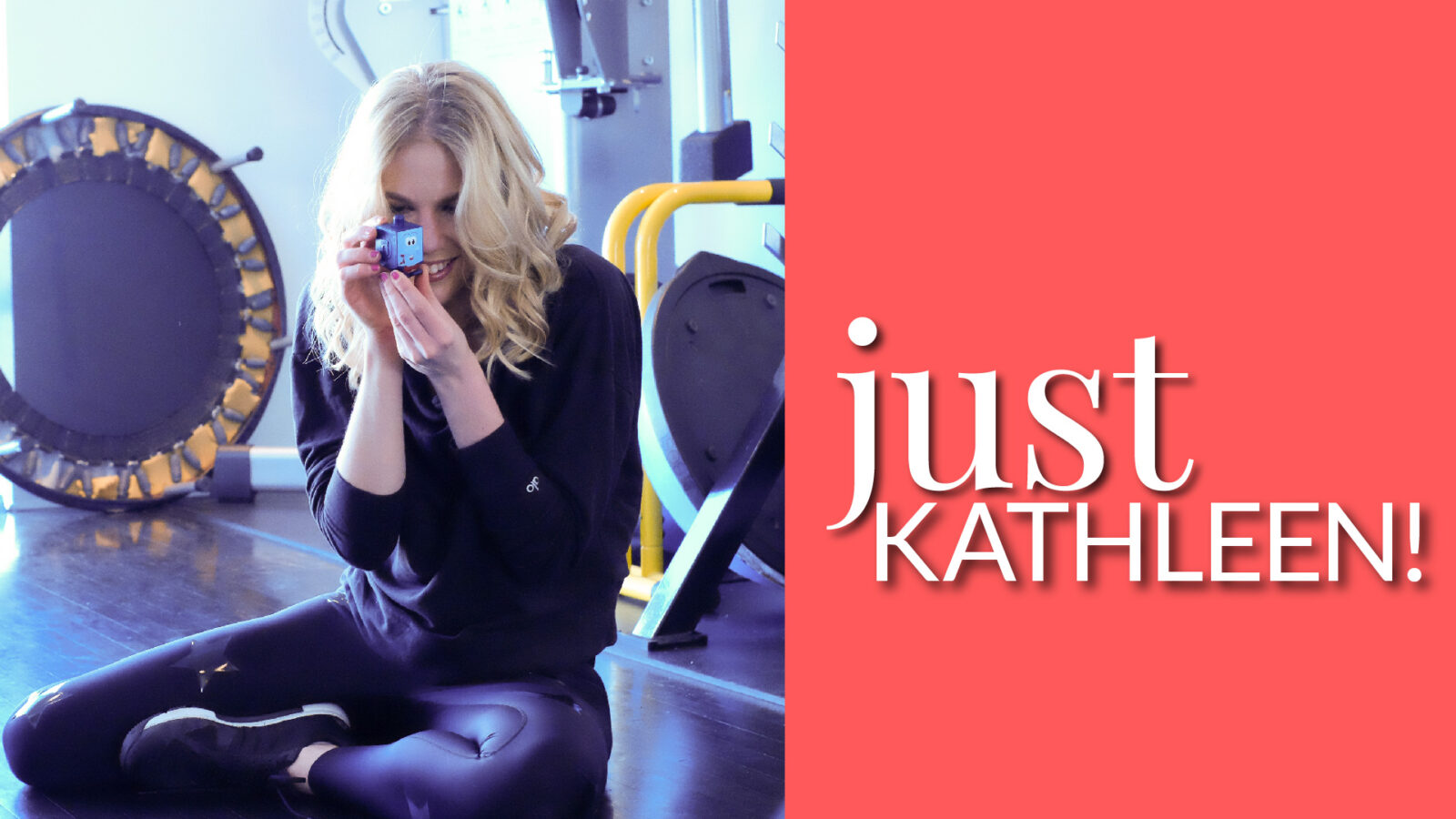Book Review: Switch—by Chip and Dan Heath

First, four questions
1. How well do you communicate with your elephant?
2. How schizophrenic are you? (No, really … that is a real question. This is not one of my sad attempts at trainer humour!)
3. Does your “process” have a clear path … or are you simply meandering?
4. What are your unique bright spots?
Switch is, at its core, a book about “change.”
The Kathleen elevator pitch for Switch is that change requires both your “elephant” AND your “rider” to be on the same very clear and orchestrated path.
Within each of us lives both a rider (a rational brain) and an elephant (an emotional brain) competing for control. I bet you didn’t know there is an elephant living in you?? (Now THAT is my lame attempt at humour!) The elephant is your energy, your emotion, the force that gets things done — unfortunately too often the force that gets things done in the moment responds to “wants” and desires. The rider thinks long term, plans, and creates direction.
Too many of us commit to a goal with only our rider on board — we don’t get “buy-in” from our elephant and we don’t take the time to “shape our future path.” You need both on board. Without the elephant you understand the goal, but lack the motivation required to follow through. With no rider you have passion, but no direction. The rider’s position is precarious. Think how small a rider is relative to an elephant. The elephant often overcomes the rider. Reaching a health goal requires consistency, but too often the rider can’t keep the elephant on track long enough to reach the destination — one never completely consistently makes healthier choices.
An example. Your rider states a goal: “Starting tomorrow I will cut out sugar because it is healthier for me” — “healthier” being the rational reason to make the choice. When we inevitably feel (ie., our elephant gets involved) that we “deserve” a sugar-filled treat, we are sad and crave comfort in the form of food, or the sugar is just there and easy to eat, our elephant “wins” and we indulge.
The emotional elephant typically desires immediate gratification and feels (as my friend Em would say) “all the feelings.” Our rider can overpower the elephant … until it can’t. So you need to “shape the path.” This includes establishing clear long- and short-term goals that both the elephant and the rider care about. Further, you need to set up systems to keep your rider and elephant en route. Create environments where your rational side can outsmart your emotional side — you won’t always feel as dedicated as you do initially.
In short, when feeling motivated shape your path extremely well. Get both elephant and rider intrigued, set specific long- and short-goals, anticipate future setbacks and moods that might derail you, orchestrate “little wins” to keep the elephant motivated, and create systems that will save you from your future emotional elephant.
Back to the four questions.
How well do you communicate with your elephant?
If you are not yet an “elephant whisperer,” don’t stress. Just start cultivating that skill. Communicate with your elephant. Work to understand your elephant’s “why”? Drop the externally imposed “shoulds” and brainstorm reasons why being healthier, completing a race, eating more homemade foods, etc. will reinforce an identity or behaviour you care about. If needed, make the “why” a “two steps away” goal. For example, I don’t love strength training but I do LOVE running. SO, I make myself strength train by saying, “Kathleen, strength training will help you run injury-free for life.”
How schizophrenic are you?
The more disconnected your “rider’s why” is from your “elephant’s why,” the more at odds you will feel. Think of it as shrinking the distance between “I know I should do X” and “but I want Y.”
For example, your physio says you need to rest your injury — no running for a month. Your rider knows you need rest, YET you can’t seem to stop running. Your elephant WANTS the immediate gratification of running. Don’t laugh. I have done this. I have run after being told to STOP because I LOVE RUNNING and I WANT to run. (Stupid elephant.) I didn’t stop running until my injury was so bad that my elephant was scared that if I didn’t chill I would never run again! Get your elephant and rider on board AND shape the path. In my case, find other ways to be active (keep my elephant happy) — water running, Pilates, etc.
Does your “process” have a clear path? Are you working towards a “postcard” destination? Or are you simply meandering?
Stop with the “hope” strategy — the “I will exercise” or “I will eat better” statements without plans. Hoping yourself towards better health doesn’t work. Make goals not wishes.
As the Heaths say, “Some is not a number and soon is not a time.”
Be crystal clear on what your goal is. Breakdown the steps needed to get there. Know your destination — create what the Heaths call a “destination postcard.” Then, script the critical moves — what I call the WWWH (when, where, what, how) of your goal. Create systems that allow you to follow through — get a fitness buddy, arrange childcare, book off your lunch breaks, etc.
Remember that although every process starts with a first step, every meandering walk does too. Action is KEY, but make sure you have an established goal so that the steps are working toward something.
What are your unique bright spots and how can you reproduce them so they become more frequent?
Bright spots are moments where you’ve been successful. Let’s say you are finding it hard to follow-through on your goal of “eating fewer treats.” Find your bright spots — the moments where you don’t indulge. Even if you eat multiple treats a day, you still have moments where you don’t. Pinpoint these. Do you forget about food when you are busy? Involved in something you care about? When food is not easily accessible? Next find ways to replicate the bright spots. If you eat better when modeling good behaviour for your children — at dinner, for example — set up a family challenge of “who can eat the most vegetables.” If you eat better when you are busy, create projects so you stay “happy busy” and set up systems to save yourself when you are doing things that often involve mindless eating. When watching TV, for example, drink herbal tea or knit to keep your hands busy.
Three other concepts I like
Fundamental attribution error
The fundamental attribution error is a typical cognitive bias — basically a form of hypocrisy — where our brains rationalize our personal actions differently than the actions of others.
We tend to explain other people’s “negative” acts — otherwise called “mistakes” — based primarily on their internal factors (think personality or disposition) and underestimate the influence of external factors. This is especially true for people we don’t know or don’t think highly of. If you are in a negative absorbing state with your boss, colleague, family, etc., every mistake they make is simply a confirmation of their malicious or idiotic disposition.
We tend to explain our own negative behaviours based primarily on situational/external factors and underestimate the roll that personality and disposition play.
If your phone goes off in the movie theatre, you are “a good person who made a mistake.” If someone else’s phone goes off, they must be “an inconsiderate human.”
If you make a mistake driving, say speeding, you are “a good driver who has a reason to speed — there are extenuating circumstances.” Someone else cuts you off, they are fundamentally flawed.
We are (of course) always simply a good person who just made a mistake — the mistake was atypical to our disposition. When we don’t know someone or are already in a negative absorbing state regarding that person, their mistake is (of course) typical of their disposition. We make mistakes. Other people royally fuck up.
The life lesson I take from becoming aware of this cognitive bias is not that I need to be perfect, but that when other people make mistakes, I need to check this bias at the door — I need to give them the same benefit of the doubt I hope they will give me. A fav quote on this topic: “Never attribute to malice that which is adequately explained by stupidity” (or exhaustion, being overwhelmed, being human, or simply being out of one’s depth). Now, if a bad behaviour becomes a pattern — or someone actively tries to hurt me — then I am all for blaming their disposition!!
Shrink the change
Break down goals into manageable parts. Make the change feel attainable — shrink the distance between where you are now and where you have to get to; make your first step SMALL. Get a few little wins under your belt — these will spiral into further wins. Little wins keep you motivated — they keep your elephant on board!
What looks like laziness is often exhaustion or a situation problem
Think of the rider as your “self-surveillance muscle.” Most of us spend our entire day self-surveying — making sure we don’t lose patience with our kids or get unprofessional with the boss. We are constantly sapping our “self-survey” muscle — a problem since the ability to exhibit “self-control” is an exhaustible resource. Think of it akin to a bench press. The first press (the first time you exhibit self-control) is easy, but the motion gets harder as your muscles exhaust. Your muscles will eventually become fully exhausted. When the discipline/survey muscle is depleted — think after-dinner exhaustion or afternoon work frustration — it is way too easy for the elephant to convince the rider to veer off course. Hello TV and 3pm snacking! Thus, you need systems. Instead of indulging in the shame-filled self-talk of “I am too lazy to reach my goal” or the self-sabotaging self-talk of “There is no sense in trying because I will fail eventually anyway,” ask yourself “Self, are my elephant and rider committed to this task and have I shaped the path to accommodate the moments when my rider is too tired to control the elephant?”
If you don’t control your environment, your environment will control you. For more on this topic, check out my review of Willpower Does Not Work.
Conclusion
The net is, direct your rider and motivate your elephant. Make sure your rider sets a clear destination; what looks like resistance is often a lack of clarity. Motivate your elephant — what looks like laziness is often exhaustion. Shape the path — what appears to be a people problem is often a situation problem. The better you shape the path, the easier it will be to keep both your elephant and your rider working together!












